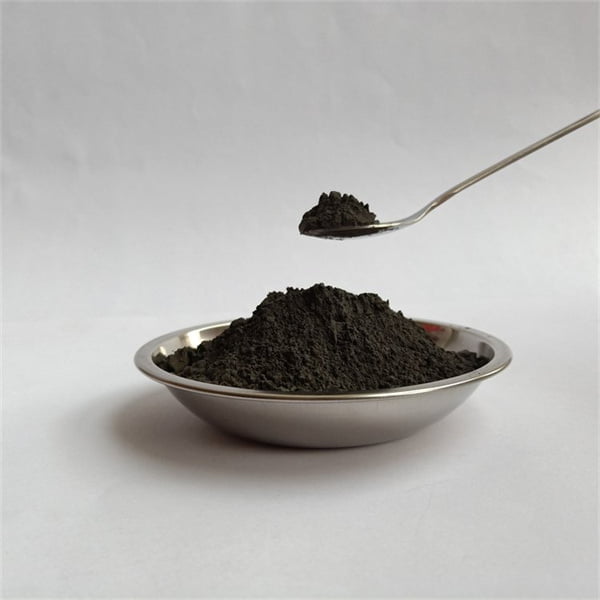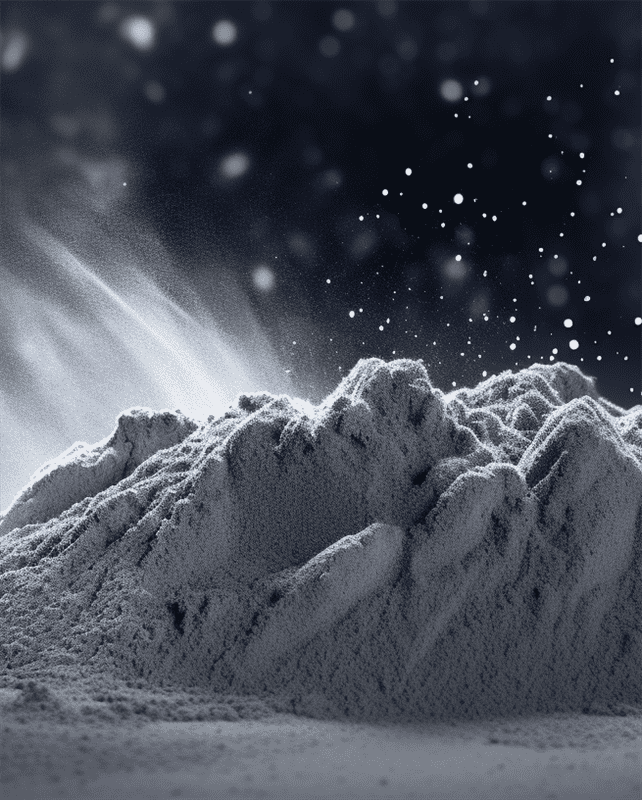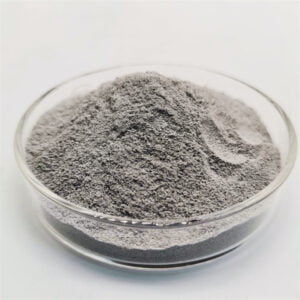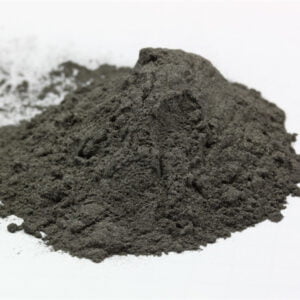IN738LC 초합금
목차
IN738LC는 가스터빈 엔진의 고온 섹션 부품을 만드는 데 널리 사용되는 중요한 Ni-계 초합금입니다. 우수한 고온 기계적 특성과 우수한 가공성이 결합되어 있습니다.
이 가이드는 IN738LC의 구성, 특성, 가공, 응용 분야, 장점, 한계, 공급업체 및 대체 초합금과의 비교를 포함하여 IN738LC에 대한 자세한 개요를 제공합니다.
소개 IN738LC 초합금
IN738LC는 다음과 같은 주요 특성을 가진 강수 경화 가능한 니켈 기반 초합금입니다:
- 우수한 고온 강도 및 내크리프성
- 우수한 열 피로 및 산화 저항성
- 최대 ~1100°C까지 특성 유지
- 가공성에 최적화된 구성
- 가스 터빈의 다양한 애플리케이션
- 시트, 플레이트, 바 및 단조 부품으로 제공됨
- 적절한 기술을 사용하여 용접 가능
균형 잡힌 특성으로 인해 IN738LC는 까다로운 조건에서 작동하는 광범위한 가스 터빈 부품에 적합합니다.

IN738LC의 화학 성분
IN738LC의 공칭 화학 성분은 다음과 같습니다:
IN738LC 화학 성분
| 요소 | 무게 % |
|---|---|
| 니켈 | Bal. |
| 크롬 | 16.0 |
| 코발트 | 8.5 |
| 알루미늄 | 3.4 |
| 티타늄 | 3.4 |
| 탄탈륨 | 1.7 |
| 탄소 | 0.11 |
| 붕소 | 0.001 |
- 니켈은 매트릭스를 제공하고 연성을 향상시킵니다.
- 고온 부식 및 산화 저항성을 위한 크롬
- Ta, Ti, W와 같은 내화 원소 강화용
- 입자 경계 강화를 위한 탄소/붕소
- 용접성을 위한 최적화된 구성
균형 잡힌 합금 설계는 고온 강도, 연성 및 가공성의 조합을 제공합니다.
IN738LC의 물리적 및 기계적 특성
물리적 속성
- 밀도: 8.19g/cm3
- 녹는 온도 범위: 1315-1370°C
- 열 전도성: 11W/m-K
- 탄성 계수: 205 GPa
- 전기 저항: 125μΩ-cm
상온에서의 기계적 특성
- 인장 강도: 1035 MPa
- 0.2% 항복 강도: 965 MPa
- 연신율: 22%
- 피로 강도: 590 MPa
고온 기계적 특성
- 인장 강도:
- 704°C에서 750MPa
- 982°C에서 255MPa
- 파열 강도:
- 760°C(100시간)에서 240MPa
- 982°C(100시간)에서 170MPa
이러한 특성으로 인해 적절한 설계 마진으로 최대 9500°C까지 장기 서비스에 적합합니다.
IN738LC 초합금의 주요 응용 분야
IN738LC는 다음에 적용됩니다:
- 가스터빈 핫 섹션 부품:
- 연소기 라이너
- 트랜지션 덕트
- 터빈 노즐
- 1단계 및 2단계 터빈 블레이드 및 베인
- 로켓 엔진 연소실
- 열처리 설비
- 핵연료봉
- 화학 공정 산업 구성 요소
다용도로 사용할 수 있어 까다로운 환경의 여러 중요 고온 애플리케이션에 유용합니다.
제조 및 처리 IN738LC
IN738LC의 중요한 제조 측면은 다음과 같습니다:
녹는
- 진공 유도 용해 및 진공 아크 재용해
- 화학적 균질성 보장
형성
- 1150°C 이상의 고온 작업
- 시트 및 호일용 냉간 가공
열처리
- 용액 처리 - 1120°C, 급속 냉각
- 강수량 경화 - 845°C, 24시간, 공냉식
가입
- 전자빔 및 진공 브레이징
- 일치하는 필러 합금을 사용한 융착 용접
코팅
- 확산 알루미나이드 및 오버레이 코팅
- 열 차단 코팅
용융, 열간 가공, 열처리, 접합 및 코팅을 제어하는 것은 최적의 특성을 달성하는 데 매우 중요합니다.
왜 IN738LC 초합금을 선택해야 할까요?
IN738LC의 몇 가지 주요 장점:
- 우수한 고온 기계적 특성
- 최대 1100°C까지 강도 및 크리프 저항성 유지
- 우수한 열 피로 및 산화 저항성
- 다른 니켈-초합금에 비해 더 나은 가공 유연성 제공
- 복잡한 부품 제작을 위한 융착 용접 가능
- 시트, 플레이트, 바, 단조품으로 제공
- 최신 합금에 비해 비용 효율적입니다.
- 확립된 처리 방법 및 사용 가능한 데이터
- 주요 엔진 구성 요소에 대한 승인
IN738LC의 균형 잡힌 특성과 가공성은 많은 가스 터빈 고온 섹션 구성 요소에 이상적인 선택입니다.
IN738LC 초합금 사용의 제한 사항
IN738LC를 사용할 때 고려해야 할 몇 가지 제한 사항은 다음과 같습니다:
- 최신 단결정 합금보다 낮은 고온 강도
- 초고온 터빈 부품에는 적합하지 않음
- 성형 중 변형 노화 균열에 취약함
- 세심하게 제어된 열처리 필요
- Nb 함유 합금보다 낮은 내산화성
- 용접성이 IN718에 미치지 못함
- 성형은 잔류 응력을 유발할 수 있습니다.
IN738LC는 매우 까다로운 환경에는 적합하지 않을 수 있습니다. 한계를 완화하려면 적절한 설계와 프로세싱이 중요합니다.
IN738LC 초합금 공급업체
IN738LC 합금의 주요 공급업체는 다음과 같습니다:
- 특수 금속 공사
- 앨러게니 기술
- 헤인즈 인터내셔널
- 카펜터 기술
- 샌드빅 재료 기술
- Precision Castparts Corp.
IN738LC는 다음과 같이 사용할 수 있습니다:
- 시트 / 플레이트
- 바
- 단조 재고
- 와이어
- 용접 소모품
다양한 제작 요구 사항에 맞게 다양한 제품 형태가 제공됩니다.
IN738LC 초합금 비용
IN738LC 비용 지표
- 시트: $90-110/kg
- 바: $100-120/kg
- 단조 재고: $110-130/kg
- 비용은 크기, 수량, 공급업체 및 원자재 비용에 따라 다릅니다.
- 일반적으로 최신 니켈 합금보다 10-15% 더 경제적입니다.
- 고순도 원자재 필요로 비용 증가
IN738LC는 많은 가스 터빈 애플리케이션에 비용 효율적인 성능을 제공합니다. 장기 계약을 통해 안정적인 가격을 확보할 수 있습니다.
비교 IN738LC 대체 초합금 사용
IN718과 비교
- IN738LC는 더 높은 온도 성능
- 크리프 및 열 피로 특성 개선
- IN718 대비 성형 문제 감소
- IN718은 더 나은 용접성을 제공합니다.
IN713C와 비교
- IN738LC는 인장 및 크리프 강도가 더 높습니다.
- 위상 안정성 향상
- IN713C보다 낮은 팽창 계수
- IN713C는 더 나은 제작성을 제공합니다.
최신 니켈 합금과의 비교
- Renes N5, CMSX-4와 같은 고급 합금은 더 높은 온도 강도를 제공합니다.
- 하지만 제작성이 떨어지고 비용이 높다는 단점도 있습니다.
- IN738LC는 비용 효율적인 속성 조합을 제공합니다.

자주 묻는 질문
Q: IN738LC 합금의 주요 응용 분야는 무엇입니까?
A: 주요 적용 분야는 연소기, 전이 덕트, 노즐, 터빈 베인 및 블레이드와 같은 가스 터빈 고온 섹션 부품입니다. 또한 로켓 엔진과 핵연료봉에도 사용됩니다.
Q: IN738LC의 주요 특성은 무엇인가요?
A: 최대 1100°C의 우수한 고온 기계적 특성, 우수한 내피로성 및 내산화성, 고강도 및 다른 Ni-초합금보다 우수한 가공성을 가지고 있습니다.
Q: IN738LC에는 어떤 열처리가 사용되나요?
A: 1120°C에서 용액 처리 후 845°C/24시간 동안 침전 경화. 필요한 특성을 얻으려면 제어된 열처리가 중요합니다.
Q: IN738LC는 어떻게 용접되나요?
A: 전자빔 및 진공 브레이징이 일반적으로 사용됩니다. 일치하는 필러 합금과 세심하게 제어된 공정을 사용하여 융착 용접을 수행할 수도 있습니다.
Q: IN738LC의 대체품은 무엇인가요?
A: 대안으로는 IN718, IN713C 및 Renes N5, CMSX와 같은 고급 Ni-합금이 있습니다. 각각은 IN738LC와 비교하여 상대적인 장단점이 있습니다.
Q: IN738LC는 코팅이 필요합니까?
A: 확산 알루미나이드 또는 오버레이 코팅을 사용할 수 있습니다. 열 차단 코팅은 터빈 부품에 유용합니다. 코팅은 산화 및 부식 저항성을 향상시킵니다.
Q: IN738LC 가공 시 어떤 예방 조치가 필요합니까?
A: 공작물 경화 효과를 피하기 위해 날카로운 공구로 높은 절삭 속도를 유지해야 합니다. 충분한 절삭유가 필수적입니다. 가공은 릴리프 열처리가 필요한 잔류 응력을 유발할 수 있습니다.
Q: IN738LC는 가스터빈 엔진에서 어디에 사용되나요?
A: 연소 라이너, 전이 덕트, 노즐, 1단계 및 2단계 터빈 베인 및 고온 섹션의 블레이드에 널리 사용됩니다.
Q: IN738LC는 어떤 형태로 제공되나요?
A: 일반적인 제품 형태에는 시트, 플레이트, 바, 단조품, 와이어 등이 있습니다. 요구 사항에 따라 다양한 형태를 사용하여 핫 섹션 구성 요소를 제작합니다.
공유
중국 칭다오에 본사를 둔 선도적인 적층 제조 솔루션 제공업체인 MET3DP Technology Co. 당사는 산업용 3D 프린팅 장비와 고성능 금속 분말을 전문으로 합니다.
관련 기사
Met3DP 소개
최근 업데이트
제품

3D 프린팅 및 적층 제조용 금속 분말
문의 정보
- 칭다오시, 산둥성, 중국
- [email protected]
- [email protected]
- +86 19116340731












